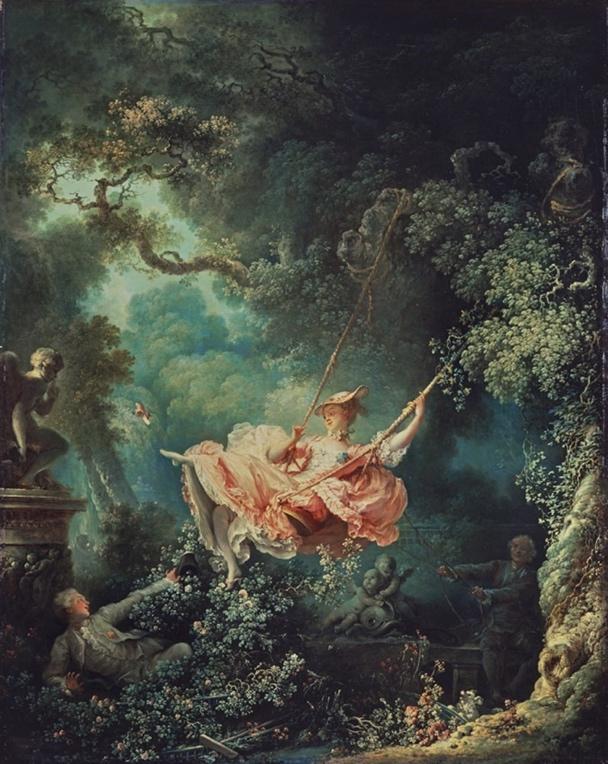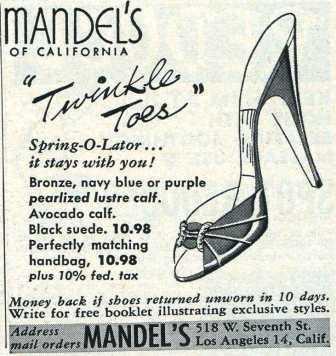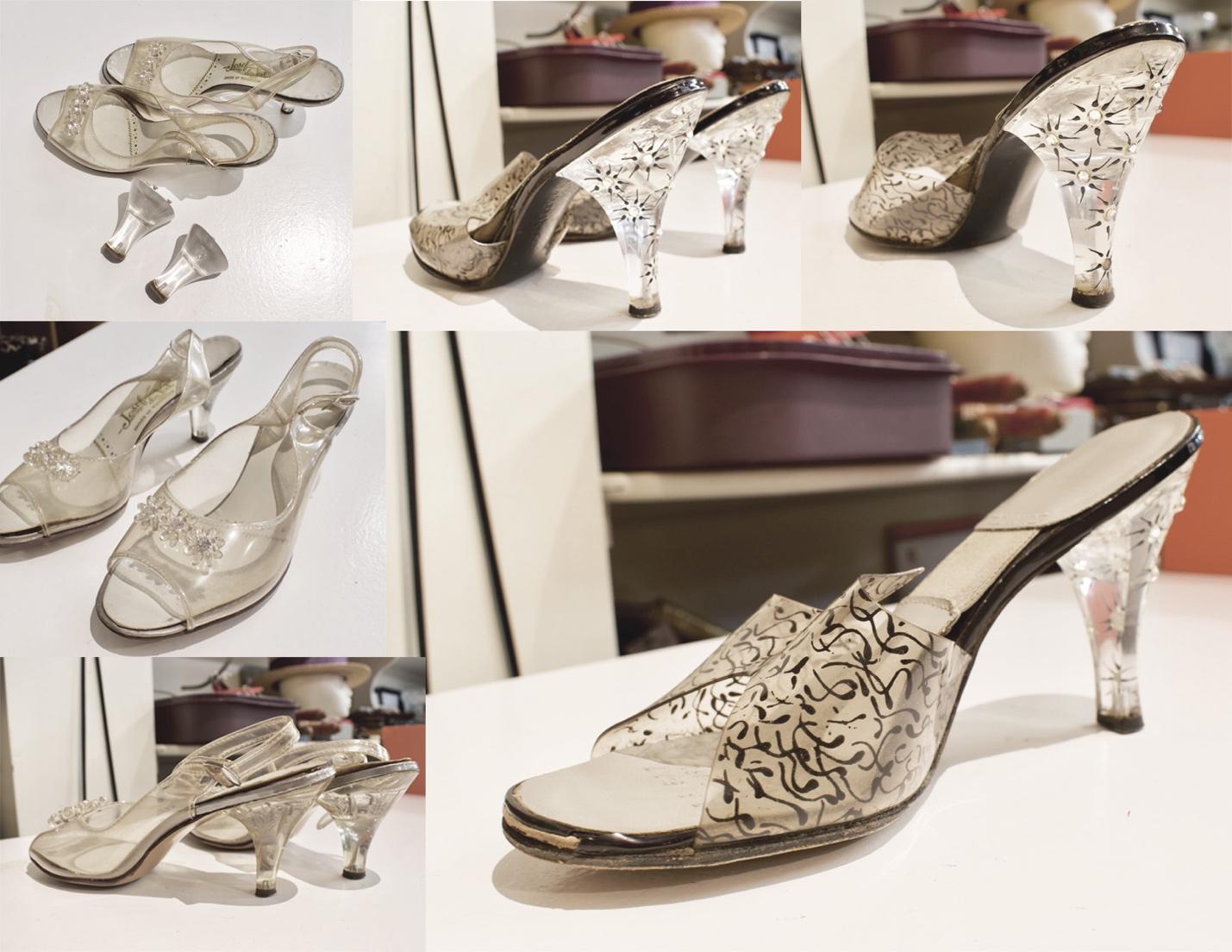Don’t miss out on the latest Spirits of Fashion news & events -- sign up now!
The Revolution of a Shoe; The Mule and The Springolator
The 1950s were a very exciting time in fashion, especially for shoes! Designers were exploring and innovating with new concepts in function, style and materials. They also were feeling less constrained by the pious societal norms of what was proper and acceptable to wear in public. Showing a little leg or ankle in public was just becoming acceptable; when designers started to show the whole foot, the sense of freedom was tremendous, and the barrier was broken.
 Figure The Swing, Jean-Honoré Fragonard, 1767 © The Wallace Collection, London
Figure The Swing, Jean-Honoré Fragonard, 1767 © The Wallace Collection, LondonThe mule was the most popular form of shoe at the time, open toed with no back and a little bit of heel. Not a new design, the mule has been around since the 17th century; worn by the higher echelon, designed to be easily taken off and not worn outdoors.
Madame de Pompadour and Marie Antoinette brought the style back into fashion in the 18th century, solidifying its place in history and art (here is a great run down of the mule and art history). But it wasn’t until much later that the mule would make it out of the boudoir and into mainstream culture.
Hollywood pin ups like Marilyn Monroe and Jane Mansfield were some of the first to take the shoe out of the bedroom. Once the mule made it into popular culture, women all over started to wear them. That made two problems very evident: the shoes were hard to walk in and they made a ton of click clack noise. There was a reason why they weren’t worn outside the house; it was because women couldn’t keep their feet in them!

This is where the innovation comes in with designer Beth Levine to the rescue! She created an amazingly simple design that would fix both the clacking noise and keep the foot from slipping in the shoe.
She had noticed that men’s boot liners were designed to keep the foot from slipping forward in the boot, by creating tension between the shoe and the bottom of the foot. So, she took a similar approach with the mule, taking a thick piece of elastic and imbedding it into the sole of the mule. Where the arch of the foot is, the elastic piece can be seen, and this is where it does the work.
When a woman takes a step, the shoe no longer falls flat with the rest of the shoe, but it is sprung back up to the foot, allowing for the shoe to stay on and the reducing the noise it would have made slamming to the floor, thus resulting in the name Springolators.

Beth Levine’s Springolators became so in demand that she made private label shoes for several popular companies. With her innovative and revealing designs she became known as “The First Lady of American Shoe Design.” She exposed the foot and made it comfortable to do so, revolutionizing shoe design and the stigma of open toed shoe culture.
Be sure to check out Ren’s video where she shows off these gorgeous shoes from the fifties:
Written By Guest Blogger: Siri H.